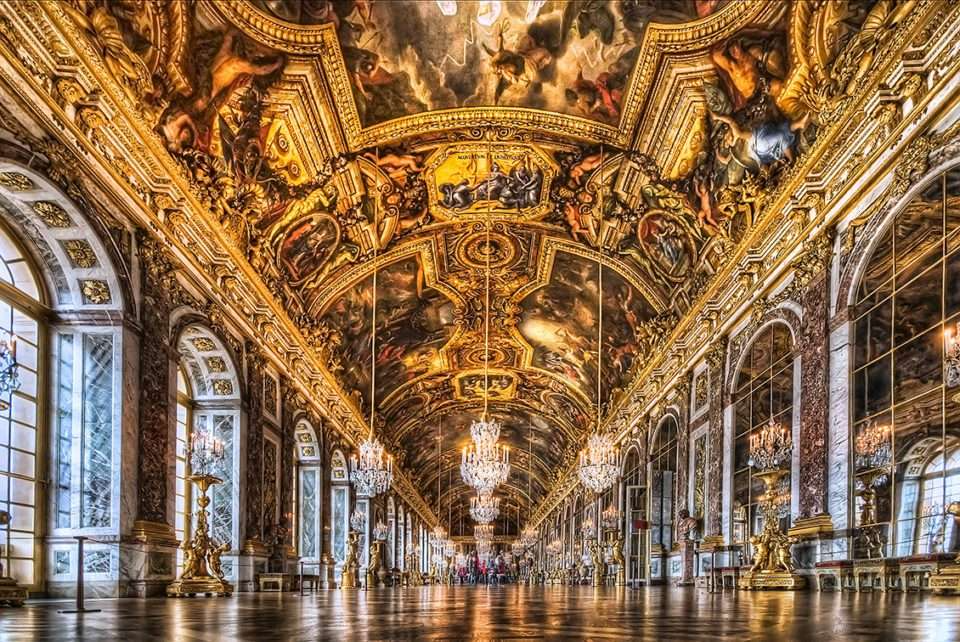
European architecture is a treasure trove of inspiration for interior designers, offering timeless styles and techniques that have defined spaces for centuries. For budding interior designers in India, understanding the essentials of European architecture—from Gothic cathedrals to Renaissance villas—can provide an edge in designing spaces that merge global aesthetics with local preferences. Let’s delve into the distinctive characteristics of European architecture, exploring how it can be adapted for Indian interiors.
1. Understanding European Architectural Styles
European architecture spans many styles, each with unique features that can be beautifully adapted into Indian interiors:

Gothic Style (12th-16th Century): Known for its pointed arches, ribbed vaults, and stained glass, Gothic architecture can bring a sense of grandeur to interiors. You can recreate this in small ways, like using pointed archways, intricate metalwork, and decorative stained glass.

Renaissance Architecture (15th-17th Century): Renaissance designs emphasize symmetry, proportion, and balanced layouts. Integrating symmetry and balance into interiors can lend sophistication and formality to Indian homes, with an emphasis on well-spaced furniture and art pieces.

Baroque Style (17th-18th Century): Baroque architecture is opulent and dramatic, featuring ornamental elements, grand staircases, and curved forms. Designers can experiment with lavish details, mirrors, and soft curves for a luxurious feel without overwhelming the space.

Neoclassical Style (18th-19th Century): This style returns to classical simplicity, with a focus on columns, clean lines, and minimalistic decor. For Indian interiors, incorporating neoclassical touches can create a stately yet understated elegance. Think classic molding, neutral tones, and simplistic furniture with detailed craftsmanship.
2. Incorporating European Design Elements into Indian Spaces
Adaptable details in European architecture can make any space feel sophisticated, and these touches work well in the context of Indian homes.
Arches and Pillars: Arches add a sense of grandeur, and they work well in Indian homes with high ceilings or spacious layouts. Columns and pillars, characteristic of Greek and Roman architecture, can be subtly incorporated into entranceways or living room designs for an opulent effect.
Coving and Molding: European homes often feature intricate ceiling and wall moldings that add depth to interiors. Interior designers can add coving or plaster molding around ceilings and walls to lend subtle elegance and highlight architectural detailing.
Windows and Natural Light: Large, framed windows, inspired by French chateaux, maximize natural light and make spaces feel airy. Replicating these with oversized, multi-paned windows can transform interiors and bring in a European feel. Floor-to-ceiling windows, where feasible, create a similar effect, especially in areas like living rooms or dining spaces.
3. Playing with Materials and Textures
European architecture places emphasis on natural materials, giving spaces a warm and timeless appeal that can be especially attractive in Indian homes.
Stone and Marble: Italian and Greek architecture often feature beautiful marble and stone. While pure marble might be expensive, consider using marble tiles or stone-finished countertops and backsplashes to emulate this look.
Wooden Beams and Floors: Exposed wooden beams, a staple of rustic French and Italian villas, add warmth and character to any room. Wooden or engineered hardwood flooring, as well as reclaimed wood furniture, can also bring this charm into Indian homes.
Iron and Brass Fixtures: European interiors often use iron railings, brass doorknobs, and chandeliers as statement pieces. These add character to a space without being overly ornamental and work wonderfully as focal points in an entryway or living area.
4. Learning from the Grandeur of European Palaces and Villas
One of the best aspects of European architecture is the grandeur of its palaces and villas, which can offer insight into designing luxurious interiors.
Symmetry and Layouts: Many European palaces were designed with symmetrical floor plans, creating harmony. Budding designers can replicate this by focusing on balanced furniture placement and aligned decorative elements for visual symmetry.
Statement Furniture: Large sofas, elaborately carved chairs, and regal beds are common in European villas. When working with larger spaces, consider using statement furniture that adds elegance without overcrowding the room.
Textures and Patterns: European interiors often incorporate rich tapestries, wallpapers, and rugs. Consider using subtle European-inspired prints or wallpapers to add a layer of sophistication without overwhelming the space.
5. Adapting Color Palettes and Tones
The color schemes in European architecture are diverse, and each era presents a unique set of tones and palettes.
Earthy Tones in Rustic Styles: Warm, earthy tones like beige, terracotta, and soft whites dominate rustic European interiors, as seen in Tuscan villas and Spanish haciendas. These colors can blend effortlessly into Indian homes, creating a grounded, homely feel.
Deep, Jewel Tones for Luxury: Rich colors like emerald green, royal blue, and burgundy were popular in Baroque and Renaissance designs. Using these as accent colors in upholstery, cushions, or even artwork can bring a touch of luxury without overwhelming the room.
Pastel Shades for a Light Ambiance: Inspired by French interiors, pastel shades like dusty pink, soft lavender, and mint can make spaces look bright, airy, and calming. These colors suit bedrooms, living rooms, and even kitchen areas, creating a soothing environment.
Conclusion: Building a Unique Design Aesthetic with European Influence
Understanding European architecture offers invaluable inspiration for interior designers in India. By integrating timeless elements, like arches, marble textures, and balanced layouts, budding designers can add depth and sophistication to their projects. Adapting these styles to suit Indian tastes allows for creativity and individuality in every space.
European architecture encourages interior designers in India to think about symmetry, proportion, and natural materials, and these principles can transform any home. As you begin your journey in interior design, let European styles serve as a starting point for building a unique, global aesthetic tailored to India’s diverse tastes and lifestyles.
